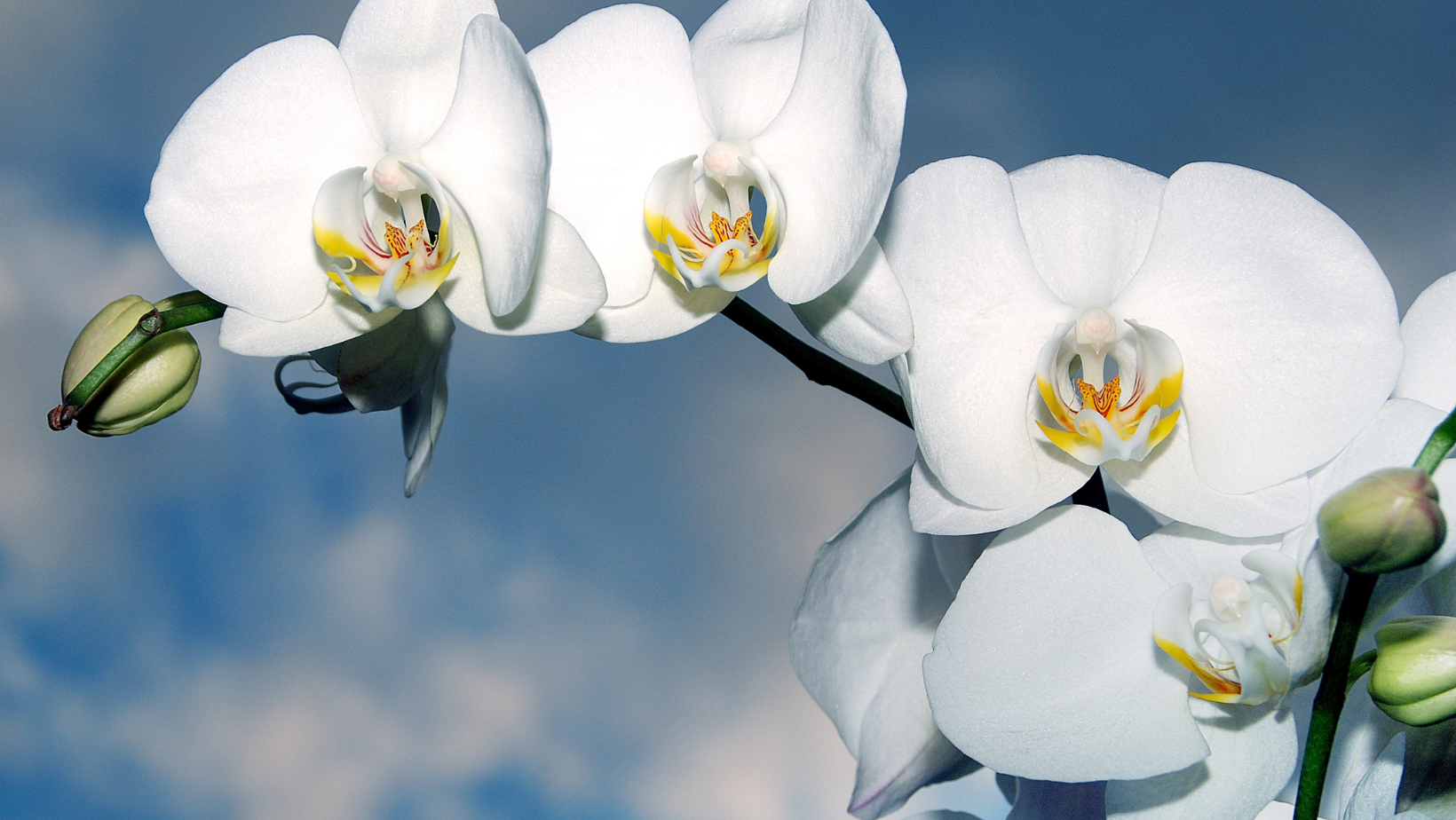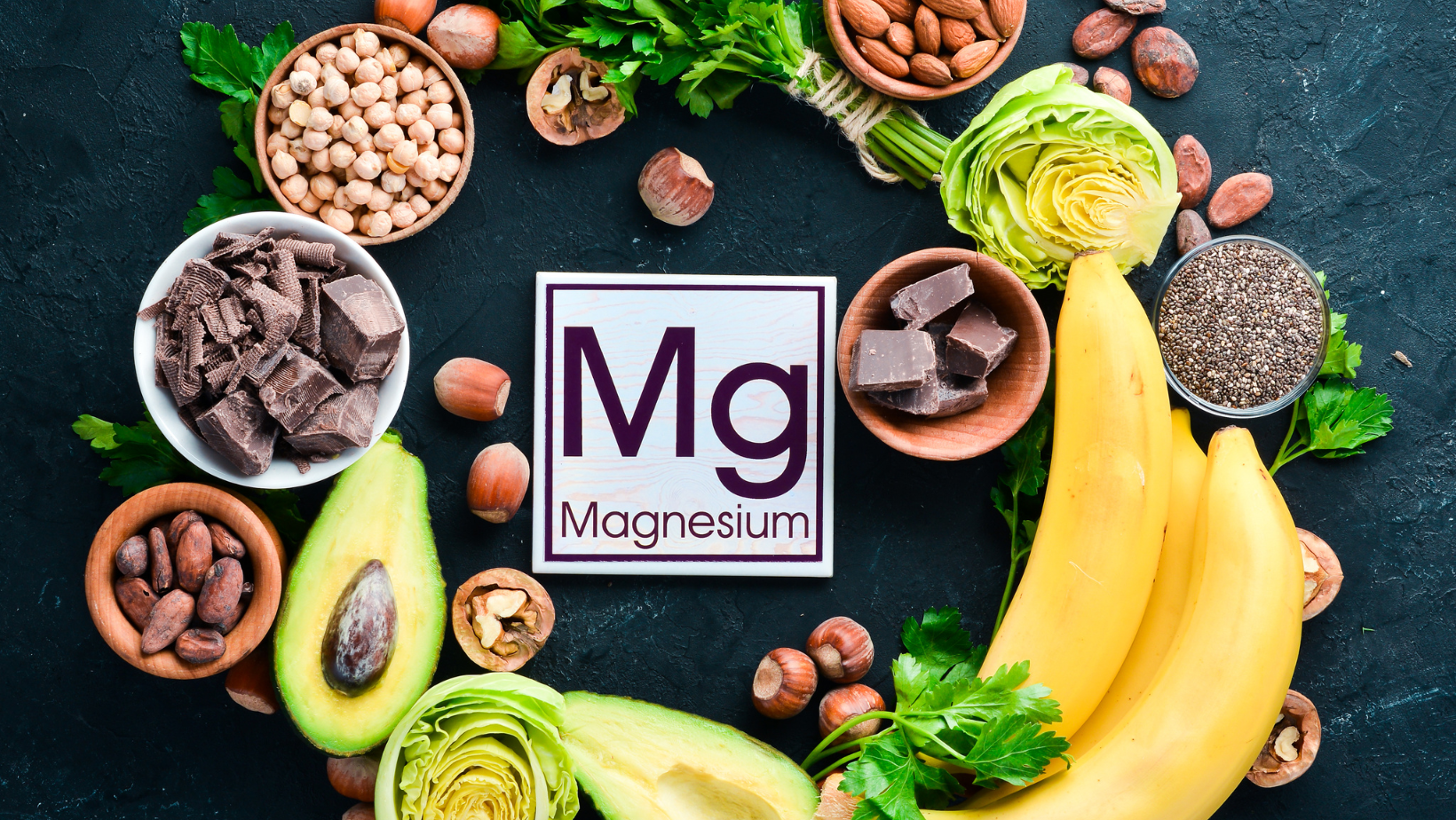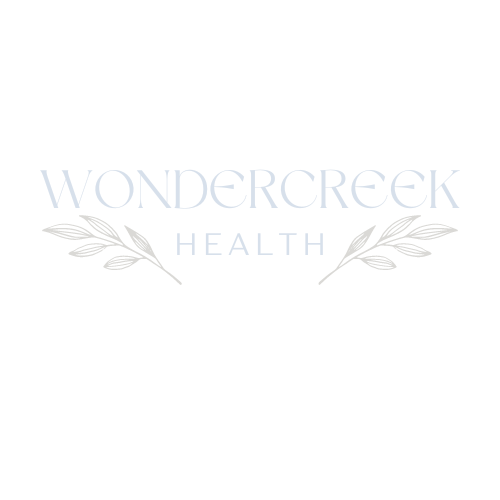Sex, Intimacy & Confidence: Reclaiming Your Sexual Health in Midlife
Anna Harrelson • March 30, 2025
It’s time to rewrite the narrative: Your pleasure, your body, your health—at every age.

Let’s start with this: there is nothing shameful or trivial about wanting a healthy sex life.
If you're in your 30s, 40s, 50s, or beyond and wondering where your libido went, why sex feels different (or uncomfortable), or why no one ever warned you about vaginal dryness, you’re not alone. And you’re not imagining it.
At Wondercreek Health, I talk to people every week who feel confused, dismissed, or ashamed about the sexual changes happening in their bodies. Many are thriving in every other area of life—careers, caregiving, health—but when it comes to intimacy, they feel stuck or unseen.
So let’s say this together: sexual health is part of whole-person health.
And pleasure is not optional. It’s a reflection of nervous system safety, hormonal balance, connection, and self-awareness. It belongs to you.
What Happens to Sexual Health in Midlife and Beyond?
Hormonal shifts during perimenopause and menopause can affect every part of your sexual experience. But so can chronic stress, birth control, antidepressants, trauma, and the weight of daily responsibilities. This is never just one thing.
Common symptoms include:
- Vaginal dryness, burning, or itching (genitourinary syndrome of menopause, or GSM)
- Pain with sex (dyspareunia)
- Loss of libido or arousal
- Less intense or harder-to-reach orgasms
- Urinary urgency or UTIs
- Pelvic floor tension or dysfunction
These changes aren’t "just in your head" and they’re not a moral failure. They reflect real shifts in tissue, blood flow, hormones, and brain chemistry.
Sex Isn’t Just for Someone Else’s Benefit
Let’s say the quiet part out loud: many of us were raised to believe that sex was about someone else's pleasure. That we should be desirable, responsive, available—regardless of how we felt. That conditioning runs deep.
But sex isn’t about performance. It’s about connection, intimacy, and pleasure—for you.
Pleasure is your birthright.
Intimacy can be tender, playful, spiritual, or wild—but it should never feel like pressure.
Your desire may look different than someone else's, and that’s okay.
This is true whether your partner is male, female, nonbinary, or you're navigating intimacy solo. There is no one-size-fits-all experience.
Why Your Desire Might Feel "Off"
Sexual changes can happen at any age.
- Oral contraceptives (OCPs) can suppress libido by lowering free testosterone.
- SSRIs and other antidepressants are well known to impact arousal and orgasm.
- Perimenopause often starts in the mid-30s, long before you notice hot flashes.
- Chronic stress and the mental load of caregiving, multitasking, and decision fatigue can leave no room for desire.
Because here’s the reality: desire doesn’t live in your genitals. It starts in your brain. And when your brain is overloaded with to-dos, responsibilities, or unspoken resentment, it’s nearly impossible to shift into a space of curiosity, connection, and arousal.
Unwinding the mind can be hard. For some of us, it means learning to use tools like mindfulness, breathwork, somatic practices, therapy, or just having space and time away from the demands of the world. Creating room for desire isn’t selfish. It’s a form of self-trust and reclamation.
The Good News: This Is Treatable
Sexual health doesn’t have to decline just because estrogen does. There are safe, effective, empowering ways to reconnect with your body and reclaim your pleasure.
1. Local vaginal estrogen (or DHEA or testosterone):
- Restores tissue health, lubrication, and blood flow
- Improves comfort, arousal, and pelvic health
- Safe for most people, even those with a history of breast cancer (with appropriate guidance)
2. Systemic hormone therapy:
- Can improve libido, mood, sleep, and confidence
- Testosterone therapy (when indicated) can support arousal and orgasm
3. Pelvic floor physical therapy:
- Addresses pain, tension, and coordination issues
- Supports better sensation and comfort
4. Nervous system regulation:
- Practices like breathwork, somatic therapy, or trauma-informed care help shift from "fight or flight" into connection
- When the nervous system feels safe, desire can return
5. Sex therapy or coaching:
- Helps explore personal blocks, relationship dynamics, and pleasure mapping
Let’s Talk About Desire
You might notice you don’t feel spontaneous desire anymore—but that doesn’t mean you’re broken. For many people, responsive desire (desire that follows arousal) becomes the norm in midlife. And it’s perfectly valid.
Touch, connection, and intimacy may need more warming up. But your ability to experience pleasure is still intact—and it can grow deeper, richer, and more grounded as you reconnect with your body on your own terms.
Final Thoughts
- You don’t need to be fixed.
- You deserve to be heard.
- You deserve to feel good in your body.
Sexual health is not about keeping up with anyone else’s timeline or expectations. It’s about reclaiming what intimacy and connection mean to you in this season of life.
At Wondercreek Health, I’m here to help you connect the dots, reduce shame, and support you with science-backed, judgment-free options that honor your experience.
Because this is not the end of your sexual story. It might just be the beginning of the most powerful chapter yet.
WonderCreek Health Blog

Many of the women who find their way to me share a common story: They’ve seen multiple specialists. Their labs are “normal.” Their symptoms are scattered across systems—joints, gut, mood, hormones, skin—and yet every provider focuses on one piece at a time, never the whole picture. They’ve often been told they’re anxious, dramatic, or “too sensitive.” And yet, they’re also some of the most intuitive, self-aware, and relentlessly curious patients I’ve ever met. They know their bodies. They know something isn’t right. And they won’t stop searching until someone finally sits down and helps them connect the dots. That’s where connective tissue disorders come in. What Do We Mean by “Connective Tissue Disorders”? When I talk about this group of conditions, I’m referring to women who often fall somewhere on the spectrum of: Hypermobility spectrum disorder (HSD) Ehlers-Danlos features Mast cell activation (MCAS) Endometriosis PMDD and other hormone sensitivities POTS or other dysautonomias The common thread? Their connective tissue is different—looser, more fragile, more reactive. And when the scaffolding of the body isn’t as stable, symptoms spill over into every system: joints, vessels, immune response, mood, hormones, digestion, even the brain. Why Midlife Feels Like a Breaking Point Estrogen has always been a stabilizer. It strengthens collagen, calms mast cells, and helps buffer the nervous system. So, it’s no surprise that perimenopause—when estrogen begins to fluctuate dramatically—can feel like the rug is being pulled out. I see women who: Once held things together with sheer willpower Managed PMDD, migraines, or endometriosis in their younger years Suddenly feel like everything has intensified: joint pain, bloating, histamine reactions, mood shifts, insomnia, brain fog For women with sensitive connective tissue and sensitive nervous systems, hormonal shifts don’t just cause hot flashes—they destabilize the entire body. Hormone Therapy for the Orchid Patient Many of my patients have tried hormones before. Sometimes birth control left them moody, swollen, or miserable. Sometimes a patch or pill was prescribed quickly, with no attention to how sensitive their system might be. So when they hear “hormone therapy,” they’re understandably hesitant. This is where my orchid theory comes in. Orchids are not weak flowers—they’re strong, beautiful, and resilient. But they need careful tending. They don’t thrive when thrown into the same soil or light as every other plant. They require patience, precision, and a slower hand. My connective tissue–sensitive patients are orchids. Their bodies respond to hormone therapy, but they need a methodical, gentle approach: Always bioidentical hormones Introduced slowly, step by step Carefully monitored, with adjustments made gradually Combined with lifestyle strategies to support the nervous system and reduce inflammation This is not a “one patch fits all” process. It’s a partnership. And when done thoughtfully, hormone therapy can bring profound relief and stability. Why Sensitivity Is a Strength The women I see are often neurodivergent—ADHD, autistic traits, or simply highly perceptive. They’re often told their sensitivity is a liability, but I see it differently. That very sensitivity is what helps them notice patterns others miss. It’s what fuels their curiosity to keep searching, even after being dismissed. Their intuition about their own bodies is spot on. Yes, their connective tissue is different. Yes, their mast cells fire more easily. Yes, their hormones seem to create more chaos. But these women are also some of the most resilient, resourceful, and insightful people I know. Moving Forward If you see yourself in this description, please know: You’re not “too sensitive.” You don’t have 27 different diagnoses—you have a pattern that makes sense. Hormones are not off the table for you—they may just need to be approached differently. Your lived experience matters as much as your lab results. This isn’t about fixing you—you are not broken. It’s about giving your body the tailored support it’s been asking for all along. This is just the beginning of a series I’ll be writing on connective tissue–related conditions: MCAS, PMDD, endometriosis, and more. Each deserves its own spotlight. But the first step is recognition. You deserve to be seen in your wholeness—not dismissed as “normal” when everything in your body is telling you otherwise.

You know how people say, "Just drink some water and take a magnesium supplement" like it’s the answer to everything? Well… they’re not totally wrong. But like most good advice, the devil is in the details. Magnesium is one of the most essential minerals in the body, involved in over 300 enzymatic reactions , yet it remains one of the most commonly overlooked deficiencies in midlife women. And no, your annual bloodwork probably didn’t catch it. So What Does Magnesium Actually Do? Think of magnesium as a multitasking background assistant—it keeps the lights on and the gears turning across nearly every body system: Brain & Mood: Regulates GABA and NMDA receptors, supporting calm, focus, and resilience against anxiety and overstimulation. Muscles: Prevents cramping and twitching, supports strength and recovery, and reduces restless legs. Sleep: Plays a role in melatonin production and nervous system regulation. Bowel Function: Helps pull water into the colon to prevent constipation. Cardiovascular Health: Regulates blood pressure and helps with vasodilation. Hormone Balance: Assists in estrogen metabolism and combats insulin resistance. In short: if you’re exhausted, bloated, moody, foggy, tense, or irregular in your gut or cycle—magnesium deserves a spot on your radar. Why Is Magnesium So Important in Midlife? Estrogen and progesterone both influence magnesium levels. As hormone levels decline or fluctuate during perimenopause and menopause, so does your ability to retain and utilize magnesium. Add to that: Chronic stress (which depletes magnesium) Modern diets (often low in magnesium-rich whole foods) Medications like PPIs, diuretics, or certain antibiotics High caffeine, sugar, or alcohol intake (all increase magnesium excretion) And suddenly, a " borderline magnesium issue " becomes a perfect storm. Why Your Blood Test Might Not Show It Serum magnesium tests only reflect ~1% of total body magnesium. Most magnesium is stored in bone and tissue. So it’s very possible to have "normal labs" and still be clinically deficient. In practice, we go by symptoms, risk factors, and therapeutic response. Common Signs of Suboptimal Magnesium Trouble falling or staying asleep Anxiety or nervous system overactivation Fatigue or burnout that doesn’t resolve with rest Muscle cramps, spasms, or eye twitches Constipation Menstrual migraines or tension headaches Joint stiffness or tightness Sugar cravings or blood sugar crashes Best Food Sources of Magnesium Magnesium-rich foods include: Dark leafy greens (spinach, chard) Nuts and seeds (especially pumpkin seeds and almonds) Avocados Legumes Dark chocolate (yes, really!) Whole grains like quinoa and oats That said, many of us still fall short even with a healthy diet, especially during high-stress seasons or if absorption is impaired. Supplements: Which Type of Magnesium Is Best? Not all magnesium is created equal. Here are the forms we most often recommend: Magnesium Glycinate: Best for sleep, anxiety, and muscle relaxation. Gentle on the stomach.** Magnesium Citrate: Useful for constipation, but can cause loose stools at higher doses. Magnesium Threonate: May support cognitive function and brain health. Magnesium Malate: Good for energy and muscle pain, often used in fibromyalgia. We generally avoid magnesium oxide unless constipation is the only concern, as it’s poorly absorbed. **Mag Glycinate is generally my go to recommendation and what we take at our house Also, BLENDS can be good- but generally more expensive Dosing & Timing Most women benefit from 200–400 mg daily, depending on needs. Take it in the evening if you're targeting sleep or relaxation. Divide doses if taking more than 300 mg (e.g. AM + PM). Always start low and go slow, especially with citrate forms to avoid urgent bathroom visits. Final Thoughts If magnesium had better marketing, it would be a top-tier wellness darling. But because it’s quiet, essential, and boring on paper, we tend to overlook it. Yet for so many midlife women, magnesium is the missing link that helps all the other systems and strategies finally click. So if you're doing "everything right" and still feel off? It might be time to start taking magnesium!

